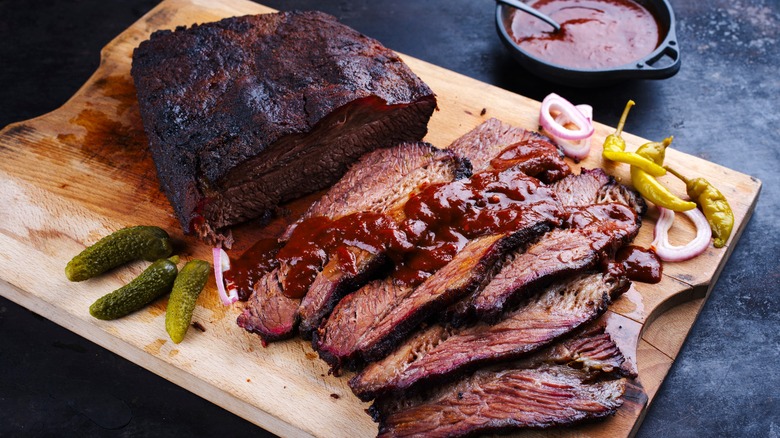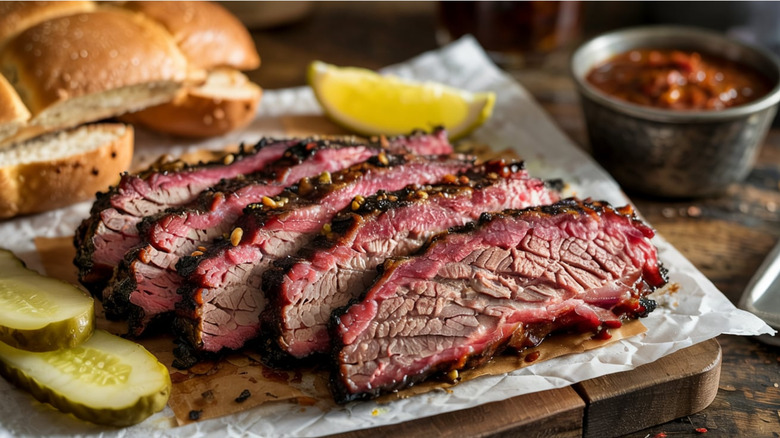What Is The 4-2-10 Brisket Method And Is It Really Good For Beginners?
When you're a beginner pitmaster, you need every trick you can get to optimize your brisket recipe. If you're unfamiliar with how different cuts and temperatures work in your new smoker, don't worry — chef Emily Brubaker has some advice about the 4-2-10 method to get you started.
"This method refers to 4 hours smoking, 2 hours wrapped, 10 hours resting," Brubaker says. She explains that four hours of smoking develops a great smoky flavor, and two hours wrapped in parchment and foil helps retain juices and heat to increase your cut's tenderness. But it's the 10 hours of rest that are particularly important. While still in paper and foil, Brubaker suggests wrapping your brisket in clean towels and placing it in an insulated environment, like a cooler warmed with heating pads. This allows the meat to slowly reach a more edible temperature while letting the juices redistribute throughout the muscle fibers for a moister result.
"Keeping the smoker at 225 degrees [Fahrenheit] is key," Brubaker continues. "An electric smoker for beginners will make this process seamless." Combine her tricks with the best types of wood for smoking brisket, such as oak or hickory, and you get a solid foundation you can fine-tune as needed. Remember, smoking is more art than science, and every cut behaves differently. Learning the cooking milestones of brisket helps you determine which stage to lengthen or shorten to deliver an incredible meal.
Limitations of the 4-2-10 brisket method
Much like the 3-2-1 rule for cooking beef brisket, it's extremely difficult to set hard numbers for how long you should smoke, wrap, and rest your meat. Factors like marbling, shape, size, and the cut you're using all affect the timing. For example, a brisket cut favored by many for barbecue — the packer cut — is large and heavily marbled, taking far longer to smoke than a leaner flat. "It all takes hands-on experience to adjust the method," Emily Brubaker notes.
That said, brisket hits the dreaded "stall" around 165 degrees Fahrenheit, when evaporating juices prevent the internal temperature from rising. Once it pushes past that point, you'll want to wrap it. Doing so too early can interfere with how much smokiness your meat absorbs and prevent it from developing a great bark. Conversely, wrapping too late can cause moisture loss that ruins the texture. Either way, keep the brisket in the smoker until it reaches around 200 degrees Fahrenheit — the point when its collagen has dissolved and it becomes fall-apart tender.
The 4-2-10 method applies most universally when it comes to resting. As long as the brisket never drops below a food-safe temperature of 145 degrees Fahrenheit, you can rest it indefinitely. Resting also keeps the meat at a collagen-melting temperature, meaning it continues to grow more tender the longer it stays above 160 degrees Fahrenheit. The longer the rest, the better the result — so always feel free to honor that 10-hour recommendation.


